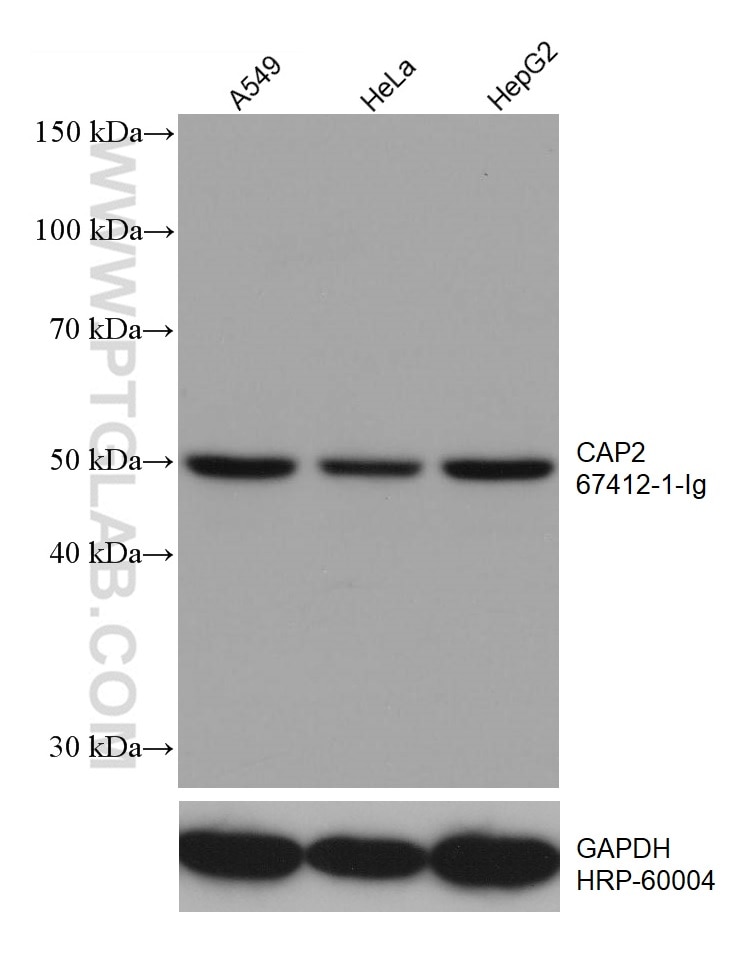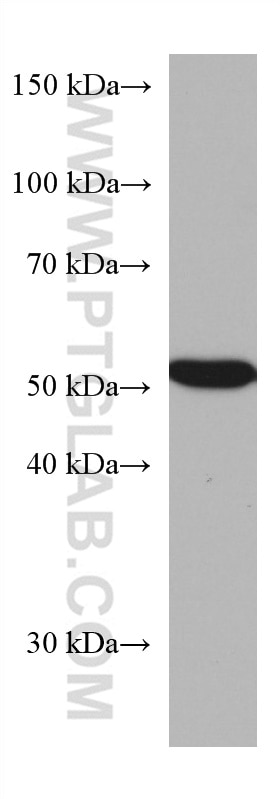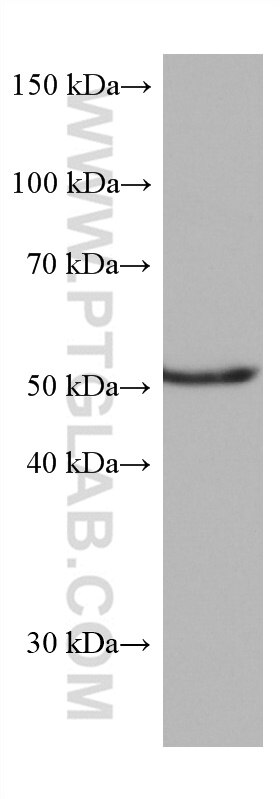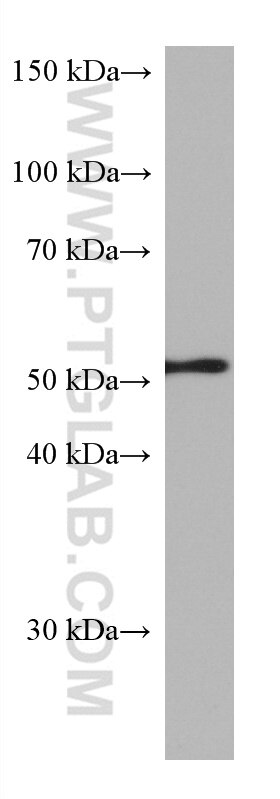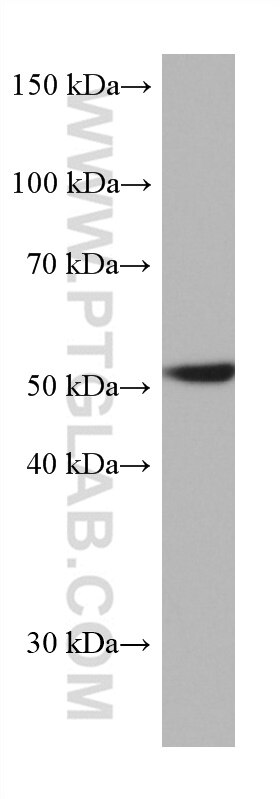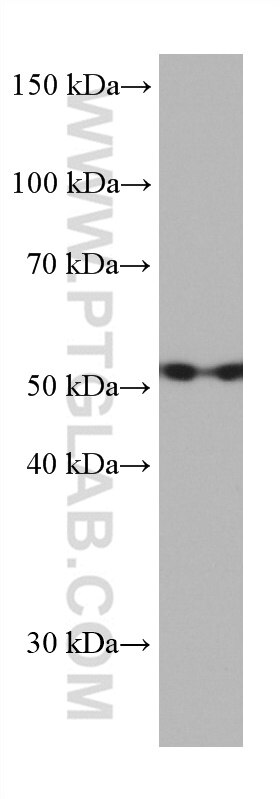Tested Applications
| Positive WB detected in | A549 cells, HeLa cells, HepG2 cells, PC-3 cells, COLO 320 cells |
Recommended dilution
| Application | Dilution |
|---|---|
| Western Blot (WB) | WB : 1:2000-1:10000 |
| It is recommended that this reagent should be titrated in each testing system to obtain optimal results. | |
| Sample-dependent, Check data in validation data gallery. | |
Product Information
67412-1-Ig targets CAP2 in WB, ELISA applications and shows reactivity with Human samples.
| Tested Reactivity | Human |
| Host / Isotype | Mouse / IgG2a |
| Class | Monoclonal |
| Type | Antibody |
| Immunogen | CAP2 fusion protein Ag8622 Predict reactive species |
| Full Name | CAP, adenylate cyclase-associated protein, 2 (yeast) |
| Calculated Molecular Weight | 477 aa, 53 kDa |
| Observed Molecular Weight | 51-53 kDa |
| GenBank Accession Number | BC008481 |
| Gene Symbol | CAP2 |
| Gene ID (NCBI) | 10486 |
| RRID | AB_2882653 |
| Conjugate | Unconjugated |
| Form | Liquid |
| Purification Method | Protein A purification |
| UNIPROT ID | P40123 |
| Storage Buffer | PBS with 0.02% sodium azide and 50% glycerol, pH 7.3. |
| Storage Conditions | Store at -20°C. Stable for one year after shipment. Aliquoting is unnecessary for -20oC storage. 20ul sizes contain 0.1% BSA. |
Background Information
CAPs (CAP1 and CAP2) are evolutionarily conserved proteins with roles in regulating the actin cytoskeleton and in signal transduction. CAP2 is predominantly expressed in brain, heart and skeletal muscle, and skin. It is found in the nucleus in undifferentiated myoblasts and at the M-line of differentiated myotubes. Overexpression of CAP2 has been reported in many cancers, including hepatocellular carcinoma (HCC), human breast cancer, and malignant melanoma.
Protocols
| Product Specific Protocols | |
|---|---|
| WB protocol for CAP2 antibody 67412-1-Ig | Download protocol |
| Standard Protocols | |
|---|---|
| Click here to view our Standard Protocols |
